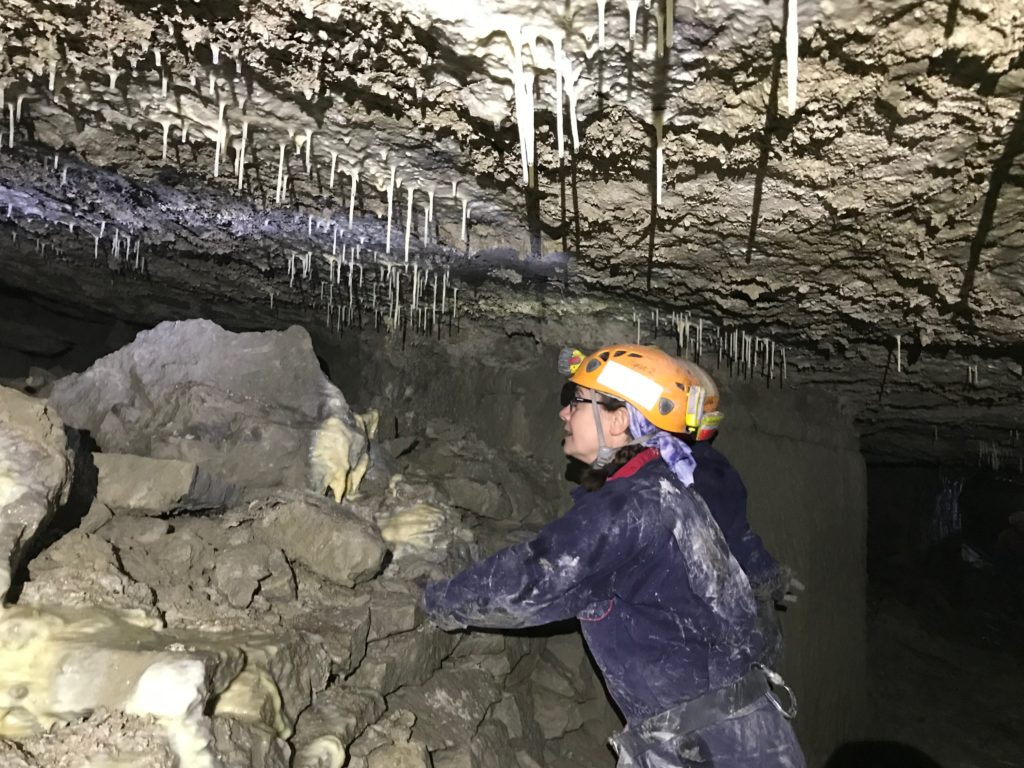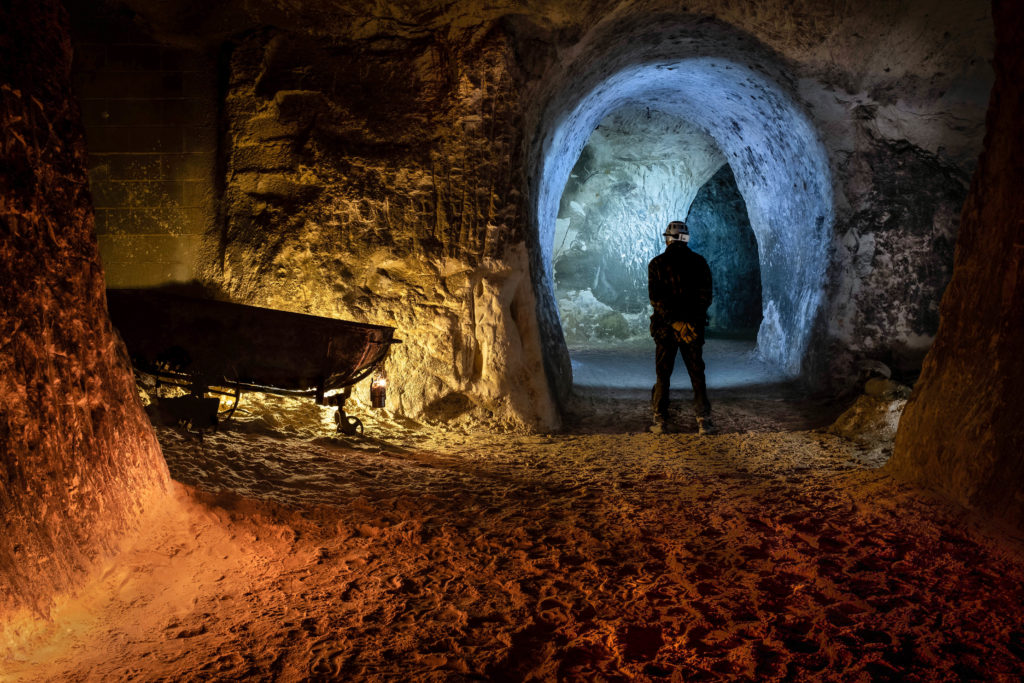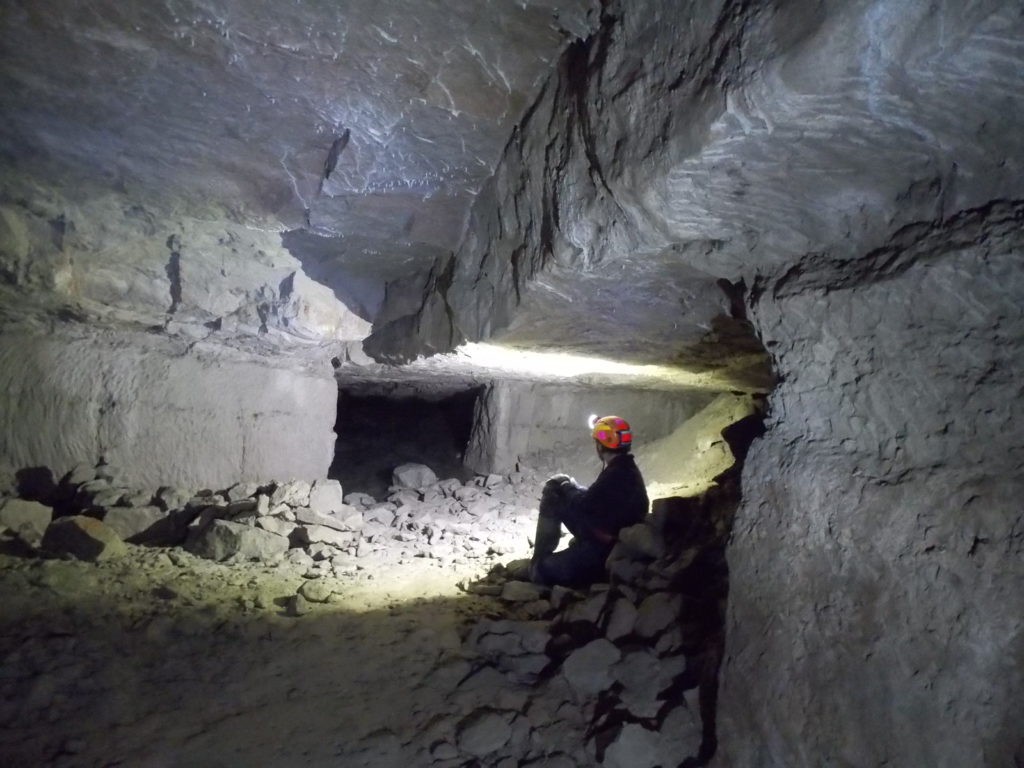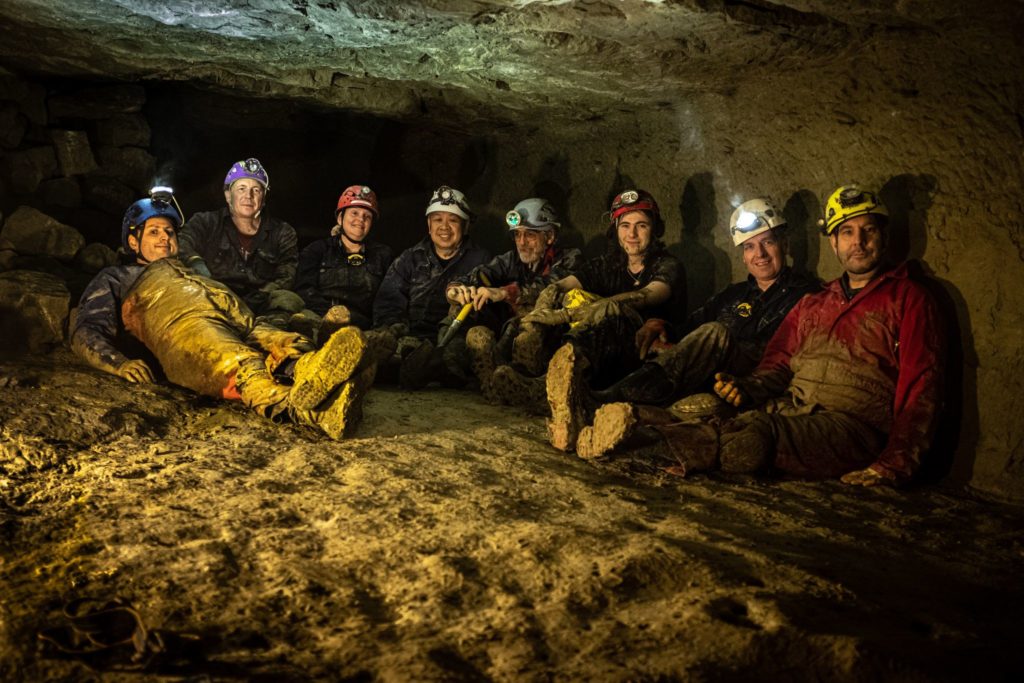What was mined in Surrey?
Sand – The high quality sand deposits, mainly in the Dorking – Reigate – Godstone area, were mined at least since the 18th century up to the early 20th century. This has left a legacy of numerous “caves”, mainly in and around the towns of the district. Some of these “caves” were dug as cellars and storage places, but the main use for most was as a source of excellent sand. It was used to make glass, in horticulture, and as a cleaning abrasive. After the last mine closed, extraction continued from open pits right up to the present day. The sand “caves”, since abandonment, have been used variously as storage places for wines and beers, air-raid shelters, and as a rifle range. Each use of the “caves” has added another layer of fascinating history.
Building stone – The Upper Greensand beds in East Surrey have been a source of building stone, known as Reigate stone or firestone, since Roman times. The heyday of Reigate stone was during the medieval centuries, and it continued to be worked into the 20th century. The legacy of all the quarrying is a treasure trove of archaeology in the form of undisturbed centuries-old mine-workings. These are largely located between Reigate and Godstone, and have been the subject of detailed investigation since the 1960s. In all, there are many miles of underground galleries, from various periods of history, and which have been used for a variety of purposes. These include mushroom-growing, and wartime secure storage for precious items.
Chalk – Unlike Kent, Essex, and other home counties, Surrey has very few chalk mines. WCMS is aware of these but does not actively study them, as they are very limited in extent, and either sealed up or reserved for encouraging bat hibernation.
Fullers Earth – It might come as a surprise to learn that the soft clay known as Fullers Earth was occasionally mined from underground galleries. None have survived, but it is an interesting and little-known facet of our local subterranean history.
Is there anything else under Surrey?
Yes! The list is almost as long as you want to make it. Air-raid shelters, wartime bunkers, road and rail tunnels, sewers, cisterns, wells, drains, and so on. WCMS will investigate any site if requested, or at least venture an opinion on it. As with most populated areas of Britain, there are probably as many tunnels which are embedded in local mythology as real ones. You only need a basic understanding of geology and topography, and a feel for what is practical, to understand that most, if not all, stories of “secret” tunnels are utter bunkum.
What does WCMS do in Surrey?
The Wealden Cave & Mine Society has a long-term interest in the abandoned underground workings of the South East, in particular the firestone quarries and sand mines of East Surrey. We are actively engaged in the study of their history, geology, archaeology, natural history, conservation and how they form an integral part of the local environment.
Some members undertake research work in the ancient workings, and publish the results. We run regular visits into these sites, and encourage new members to come along and get involved.
Is it possible to visit the mines?
We manage access to several sites on behalf of the land owners. If you would like to visit some of the old quarries then please contact us (select “Access Request” from the drop down list) and we will do what we can to help you.




